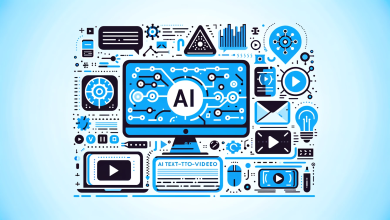
AI agents are rapidly moving from prototypes to production, reshaping how businesses automate, scale, and interact with customers. From workflow orchestration to multimodal assistants, “agentic AI” is no longer a lab experiment — it’s the foundation of a new enterprise infrastructure.
To understand what’s truly being built, we analyzed 542 AI agent development projects on Upwork — a valuable lens into where real companies are investing. The data reveals which tools are becoming industry defaults, how open-source frameworks are evolving, and where the next wave of innovation is emerging.
If you also want to learn about the top use cases and industries deploying agentic AI, see full report: ‘AI agent development trends 2025’.
What Are AI Agents?
AI agents are autonomous systems that perceive context, reason, and act. Unlike traditional chatbots, they combine multiple layers:
- A reasoning engine (often an LLM or hybrid setup)
- Memory (vector databases or knowledge stores)
- Tool use and API integrations
- Orchestration frameworks (LangChain, CrewAI, Autogen)
- Text, voice, or multimodal interfaces
For businesses, the shift to agentic AI means greater automation and contextual intelligence — from customer support to internal operations. The challenge is no longer making AI talk but making it decide and execute responsibly.
Programming Languages for AI Agent Development
In over half of the projects we analyzed (52%), Python was the backbone of agent development. Its deep ecosystem — TensorFlow, PyTorch, LangChain, Hugging Face — makes it the default environment for reasoning and orchestration.
But production deployments often pair Python with other languages. Node.js (17%) and Go (12%) appeared frequently, handling real-time APIs and concurrency at scale. On the client side, JavaScript (10%) and TypeScript (6%) acted as connectors, embedding agents into dashboards, apps, and web interfaces.
This transition from Python-only prototypes to polyglot stacks mirrors how enterprises are operationalizing AI. Python dominates innovation, but production success increasingly depends on pairing it with faster, more concurrent back-ends. For technology leaders, this signals that agent projects require cross-disciplinary teams — data scientists, backend engineers, and DevOps — rather than isolated ML units.
Frameworks for AI Agent Development
If Python is the operating system of agent development, frameworks are the nervous system. LangChain (55.6%) dominated the stack, acting as the glue between LLMs, vector databases, and external tools. But new contenders are pushing the boundaries: CrewAI (9.5%) and Autogen (5.6%) enable multi-agent collaboration, where multiple agents coordinate like a team of microservices. LlamaIndex (7.1%) specializes in retrieval, giving agents structured access to enterprise data.
The framework race reveals a shift from prompt engineering to system orchestration. For enterprises, the key takeaway is governance: as frameworks like LangChain or CrewAI enable multi-agent collaboration, maintaining control, observability, and auditability becomes mission-critical. CIOs should treat orchestration frameworks as core infrastructure, not experimental libraries.
LLMs Driving AI Agent Technology Trends
Every agent needs a brain, and in 2025 the default is still OpenAI, used in nearly 73.6% of projects. Claude (16.6%) has carved out a strong share among enterprises that value safety and alignment. Google’s Gemini (3.9%) and Meta’s Llama (2.8%) are smaller in usage but important challengers. Open-source ecosystems on Hugging Face continue to grow, underpinning experimentation with sustainable AI development by giving teams control and cost savings.
What’s emerging is a multi-model reality. Many serious projects don’t bet on a single provider: OpenAI for general reasoning, Claude for sensitive data, Llama for cost-efficient batch tasks.
The move toward multi-model stacks reflects a multi-cloud mindset in AI. Companies are diversifying to balance capability, cost, and compliance. Executives should plan for LLM vendor agility — designing systems that can swap models without disrupting workflows — and align procurement with data-governance and risk strategies.
Vector Databases and Memory Tools for AI Agents
Memory is what separates a clever chatbot from a useful agent. Out of 133 projects mentioning memory, Pinecone (22.6%) led as the managed “cloud of recall.” Open-source options like Weaviate (16.5%), Qdrant (4.5%), and Milvus (4.5%) are gaining traction, especially for teams that want control over cost and data. Meanwhile, Postgres with pgvector (18.8%) shows how legacy systems are adapting for the AI era, with Redis (8.3%) and MongoDB (4.5%) adding vector search.
Memory has become the new competitive layer in AI architecture. Enterprises that manage data efficiently across Pinecone, Weaviate, or Postgres-pgvector will gain faster, context-aware decision engines. However, this also raises questions about data residency, cost predictability, and model-data drift, which should now enter board-level AI risk discussions.
No-Code AI Agent Development Tools on the Rise
Nearly half of all projects (247 out of 542) mentioned no-code or low-code tools. n8n (38.1%), Zapier (27.9%), and Make (15%) were the most common, often paired with Airtable (10.5%) or Notion (4%) as lightweight databases.
The rise of no-code AI tools shows how automation is democratizing agent creation, but it also challenges IT governance. Enterprises must define clear integration and security policies for these tools, ensuring that rapid experimentation doesn’t fragment infrastructure. In the near term, expect a convergence between no-code prototyping and enterprise-grade deployment pipelines.
Voice Technology Tools for AI Agents
Out of 542 jobs, 181 mentioned voice, speech, or audio. Twilio (23.2%) provided telephony infrastructure, while Vapi (16.6%) and Retell (13.3%) emerged as conversation engines for low-latency interactions. Whisper (12.2%) was the top choice for transcription, and ElevenLabs (14.4%) set the benchmark for lifelike synthetic voices.
Voice is fast becoming the interface of trust. As customer-facing AI shifts from text to speech, sectors like healthcare and finance will use conversational agents for real-time, high-stakes interactions. Organizations should invest early in latency optimization, multilingual accuracy, and compliance auditing — the factors that will separate usable voice AI from reputational risk.
Key Takeaways: The Future of AI Agent Technology Trends
AI agents are moving from experimental prototypes to production-ready infrastructure. Our analysis of 542 AI agent development projects reveals that the technology stack is maturing fast — consolidating around common languages, frameworks, and tools while introducing new challenges in governance, scalability, and compliance. As enterprises race to automate processes and enhance decision-making, the focus is shifting from building intelligent chatbots to orchestrating autonomous, multimodal systems that can reason, act, and learn safely at scale.
Looking across the stack, several patterns stand out:
- Consolidation around defaults: Python, LangChain, Pinecone, and OpenAI are the anchors.
- Multi-agent collaboration is no longer a research curiosity; frameworks are enabling it in production.
- Proactive and multimodal agents are raising user expectations beyond text-only interfaces.




